#11 Cuddalore ring-seiners struggle to survive after the ban
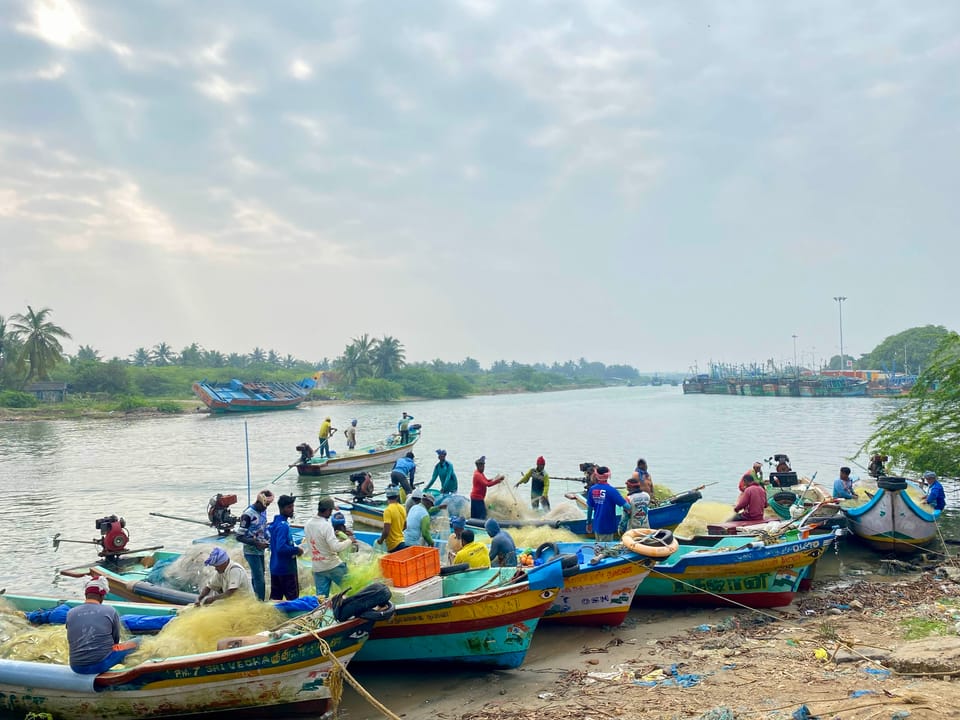
By Jan Mogens Borchert
This is Part 2 of the story describing the rise and fall of ring-seine fishing in Cuddalore district. Read Part 1 to learn about the beginnings and peak times of ring-seining in Cuddalore, Tamil Nadu.
In 2019, business as usual abruptly ended for the ring-seine fishers of Cuddalore. Almost one year before, in May 2018, the long-lasting tensions caused by ring-seine nets between its users and opponents as well as among ring-seiners had culminated in a violent fight between two ring-seining villages, in which the leader of one side was killed. This incident gave new impetus to the ongoing agitation against the usage of ring-seine nets. Several court cases were opened that demanded the enforcement of Government Order 40, the 2000 bill that had banned purse-and ring-seine nets in territorial waters in the whole state of Tamil Nadu.
Fisheries department officials started checking on illicit ring-seine operations more often, and the full enforcement of the ban began with a concerted action by Cuddalore district’s fisheries department, police, and road transport authority in spring of 2019. Roads were blocked and multiple trucks carrying ring-seine nets and crews were stopped. In some areas, further nets were impounded, but the majority of ring-seiners ceased activity without intervention.
Fallout of the ring-seine ban
The ban of ring-seine nets had an immense impact on the involved fishermen and their families. Ring-seine groups tried to sell their nets to cover their costs, but could only sell the equipment at low prices. “Only 10% of people escaped unscathed, 90% suffered significant losses. Here, many boats were dismantled and used for firewood,” says a disgruntled fisherman. In numerous villages along Cuddalore's coast, kanaa boats could still be seen lying dormant in the water in 2023, several years after the ban was enforced.
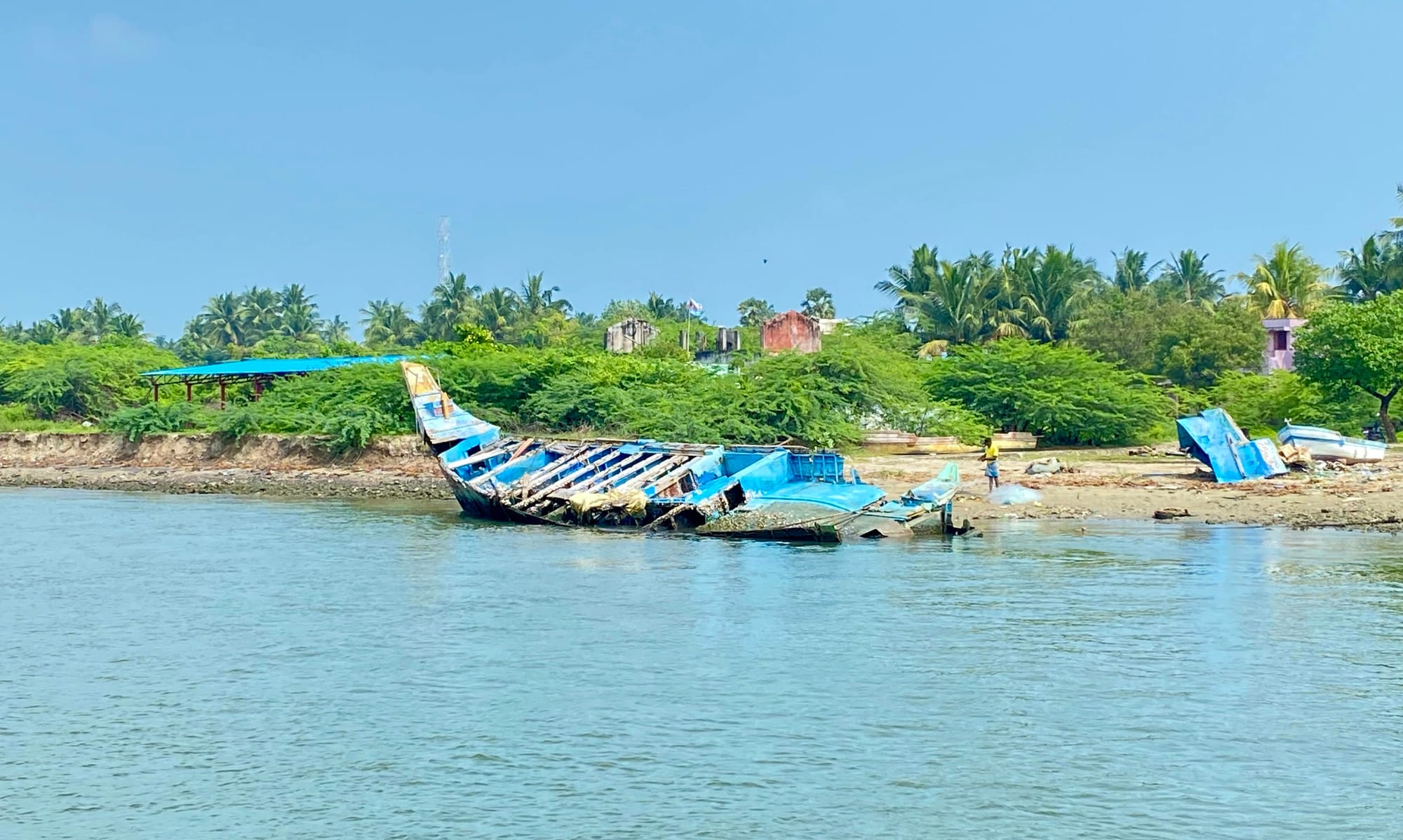
In some areas, the Fisheries Department confiscated the nets outright. “They promised us a compensation sum and other jobs, but they never gave us anything. We asked again, but we didn’t receive anything. Many of us suffered huge losses.” The only solution Fisheries Department officials presented the former ring-seine fishermen with was an already existing subsidy scheme for the construction of tuna long liners intended for deep sea fishing. The scheme is only open to groups with a maximum of six shareholders and only covers up to INR 30 lakh (USD 35,904) or 50% of the construction cost, making it completely infeasible for most. Furthermore, the collateral requirements were high and necessitated applicants to present papers of land ownership (patta) in order to access the scheme. This was not the solution the ring-seiners had hoped for.
Without opportunities equal to ring-seine, most fishermen had no choice but to return to small-scale fishing with fibre boats. Many are still in debt, either from their initial investment in the ring-seine or from loans they took to cover losses during the operation. While the overall income from ring-seine was higher than that from trawling, it was unequally distributed, both between participants and over time. “The cashier who handled the finances for stakeholders often embezzled our money. Sharing meant taking debt, only people with their own boats earned good profits,” recalls a disillusioned former shareholder. In contrast to small-scale fishing and trawling where wages are paid per trip, in ring-seine “the wage was calculated and given per month. Before the payment it was difficult to run our families, so we had to take on more debt.” Furthermore, while ring-seine boats typically went out every day, catches were not guaranteed and periods without profit could last for a longer time.
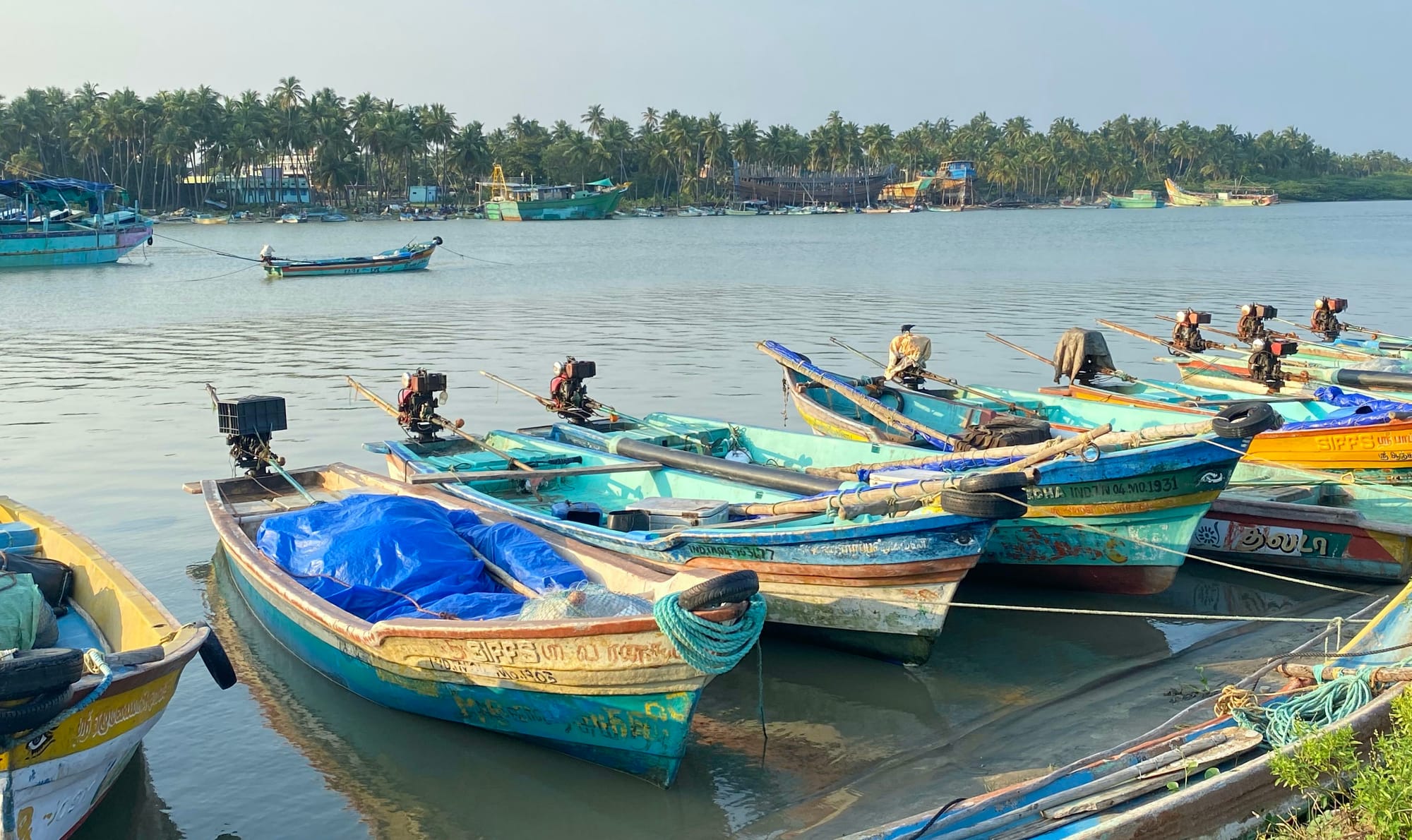
In order to make a living and pay their debts, many fishermen had no choice but to bring more members of their household into work. “After the ring-seine ban, everyone worked morning to night, all women and men. Now both our parents and us children are working.” One exception seems to be women of childbearing age. While fishermen’s wives had traditionally received their catch when the boats came ashore and carried the fish to market or sold it door-to-door, they ceased to work when household incomes rose during the ring-seine time. Although many families have reverted to a more precarious economic status, most men hold on to this symbol of achieving middle-class status and prefer for their wives to stay at home. “I can never allow my wife to work” is a commonly heard sentiment – no matter the income status of the individual household.
Leaving fishing behind?
One might lightly suggest that the ring-seiners should leave fishing behind. However, there are many hurdles to this. Maritime fishing on the Coromandel coast is dominated by the Pattanavar caste. Pattanavar, along with the inland fishing Sembadavar caste, fall under the Most Backward Classes category in Tamil Nadu. Although the caste system has been officially abandoned, many Pattanavar feel tied to their occupation. While there has been a decline in caste-based discrimination in hiring practices, fishermen still often lack the networks and connections outside of their community that are necessary to obtain employment in India’s competitive formal labour market. A lack of formal education compounds difficulties in finding local employment outside of fishing, especially for older fishermen: “I am not educated enough. Even as a cashier in a supermarket, you need a 10th standard certificate.” Younger, often better educated fishermen are also struggling to find decent jobs, especially if these are in larger urban areas such as Chennai or Bangalore. This is due to a lack of personal connections. On top of that, fishing has some alluring advantages over other jobs. For one, there is the possibility of “hitting the jackpot”. Secondly, compared to other sectors there seems to be a relatively flat hierarchy between boat owner and labourer. As one fisherman puts it: “If I go and work in a factory, I will earn INR 10,000 or 20,000 (USD 119.69 - 239.36) per month and work for someone else. But if I continue fishing, I may sometimes make even INR 5,000 (USD 59.48) in one day, and I am more free.”
The other option, besides returning to small-scale fishing, has been to seek contract-based work abroad. Places like Dubai, Qatar, Saudi Arabia, and Singapore have been popular destinations since the 1980s. However, for a few years in the 2010s, it was more lucrative to stay home and work in ring-seine fishing. One former migrant worker turned trawler owner says: “I was making INR 35,000 (USD 418.90) in Singapore as an electrician and had a high cost of living. Back home, I could have earned the same or even more, and I could have saved more.” However, after the ban, the worsening situation in Cuddalore district has forced many young men to seek a better income abroad. “Now the only families who are doing well are the ones that have one or two sons abroad. The rest of us are suffering," one fisherman who remained in India shared and explained his decision not to migrate: “I don’t have any skills besides fishing so how can I get a job in a foreign country. And who will take care of my wife and my baby daughter when I am away?” Another fisherman looking for work abroad mentioned the high initial costs and other pitfalls: “I am looking for positions abroad, but you have to pay a lot of money to the agent, and for the flight. 50% of the agents you give your papers and money to, you never hear anything back.”
In need of a harbour
For those who remain in the fishing industry, new obstacles are looming. While small-scale fishermen historically used their village beaches to launch and land their fishing trips, they were introduced to using a fishing harbour during the ring-seine period of the late 2000s and 2010s. Once they returned to conventional fishing methods after the ring-seine ban, they continued to sell their fish directly in the Cuddalore Fishing Harbour without involving their wives. The reasons for using the harbour mentioned by small-scale fishermen are manifold: “We can get a better price here than in our village” and “almost nobody comes to our village to buy fish.” This shows that the spatial centralization of fish marketing opportunities has pulled small-scale fishermen to use fishing harbours. Environmental factors like rising sea levels and changing currents also play a part: “It has become harder to start and land our boats from the beach side of the village because the beach is slowly being washed away by the ocean.”
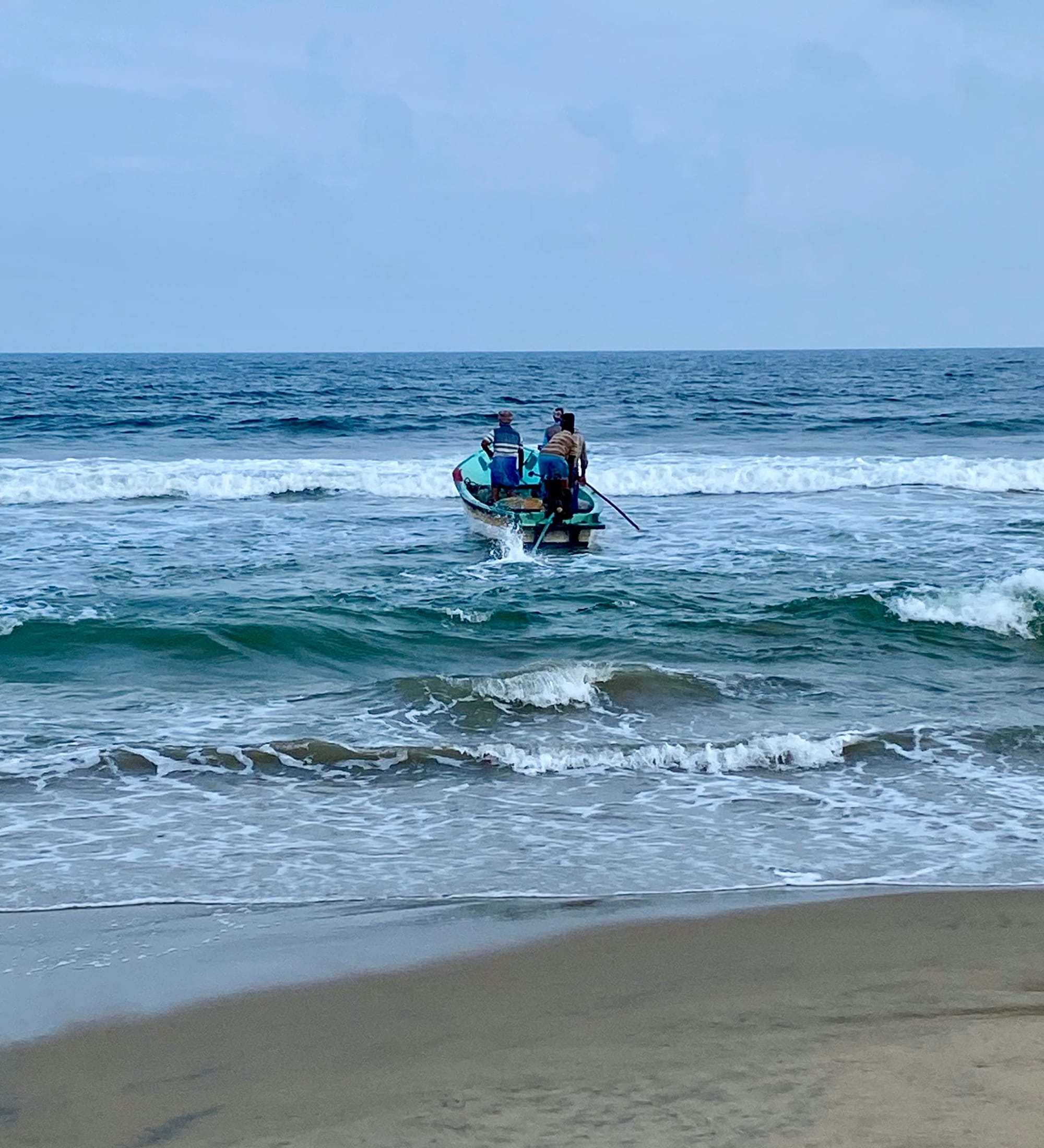
In the first phase after the ring-seine ban, small-scale fishermen mostly sold to female small-scale fish traders in the middle of the harbour – in the same place where they used to sell their larger ring-seine catches. However, they soon came into conflict with mechanised trawlers, who preferred to keep their vessels permanently moored on the pier. “They told us not to sell here and move somewhere else”.
This led to the creation of two different fish markets within the same harbour. Multi-day trawlers typically return in the early morning hours from 4 to 8 AM and sell their catch in auctions in the middle of the harbour. Here, both larger companies and fisherwomen alike buy their fish for the day. Conditions are not perfect, but the market offers buyers and sellers enough space, has electric lighting and access to water and sanitary facilities. It also has access and parking space for vehicles such as motorbikes, auto rickshaws, cars and trucks.
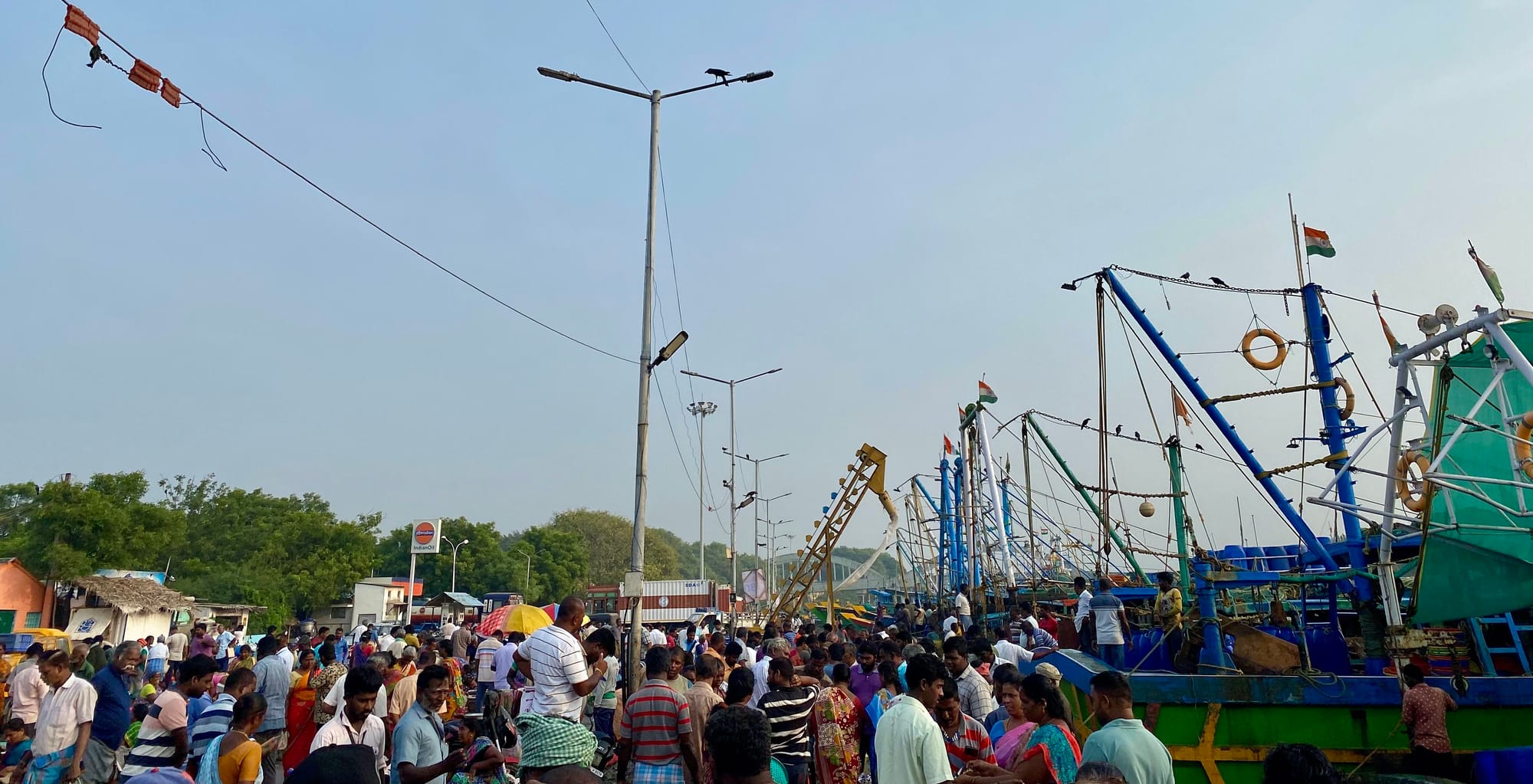
The second market for fish landed after 8 AM was relocated to the edge of the harbour under a bridge. While individual fibre boats sometimes park more centrally in the harbour, they risk being reprimanded and chased away by trawler crews. The only place where fibre boats can land and unload their catch without risking a run-in with the crew of a trawler is the small strip of land under the bridge. However, this section can only accommodate 10 to 15 small fibre boats at a time. With several hundred fibre boats, mainly from the eight villages closest to the Cuddalore Fishing Harbour, this means that individual boat crews have only a short window of time to untangle their nets, pick out the fish, sort them into baskets and sell them to fisherwomen. This inevitably leads to tensions between the boats. There are no toilets nearby, so both fishermen and female vendors relieve themselves on the shore and in the bushes, a few metres away from where fresh fish is sold to private customers. The lack of space between the fish vendors and the absence of water and electricity combined with the earthy ground that is more difficult to clean than the concrete surface of the rest of the harbour, render this space inadequate for landing and selling fish.
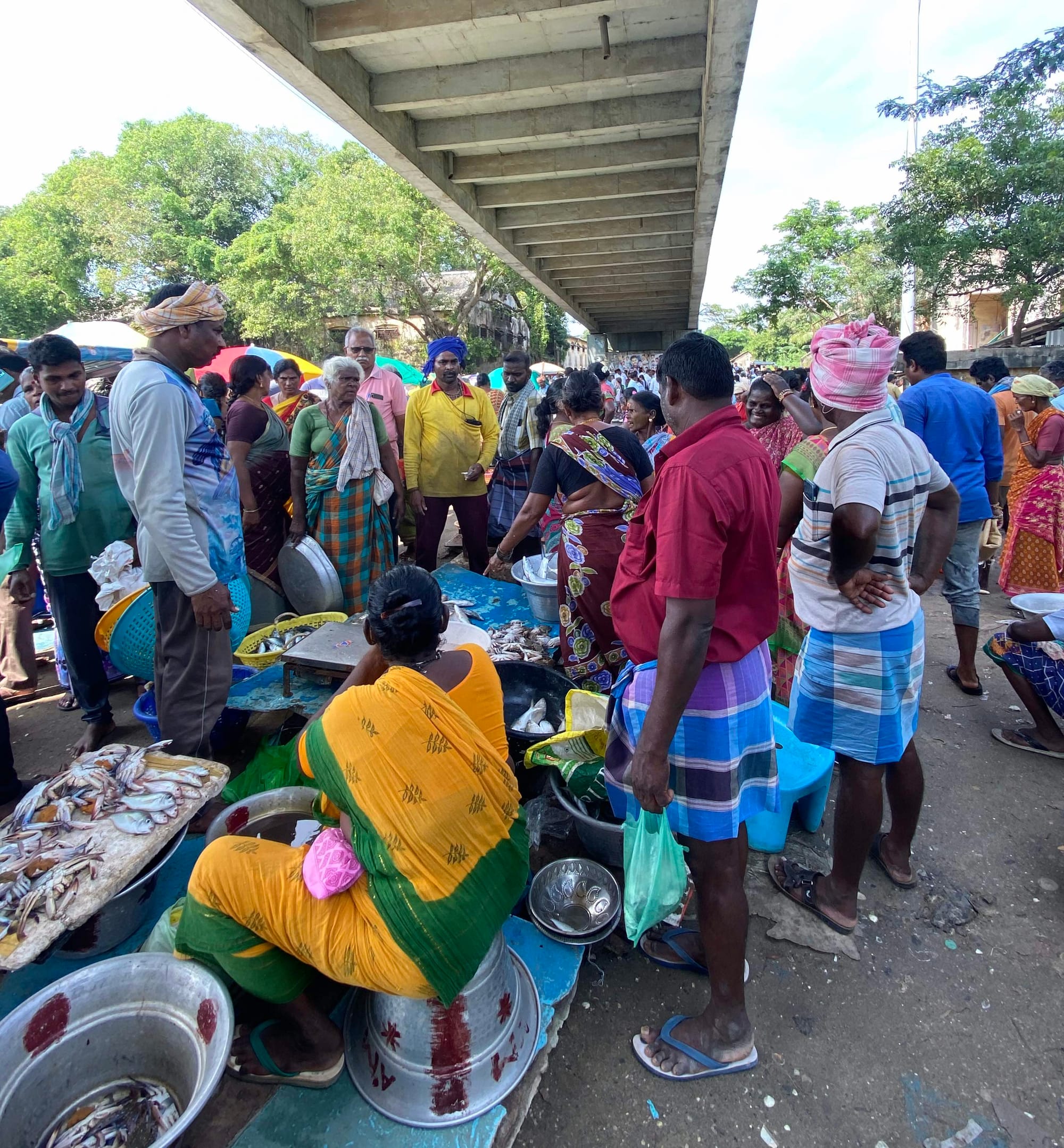

Politics of the fishing harbour
These inequalities are created by a power imbalance between the owners of mechanised trawlers and export-oriented traders on one side, and small-scale fishermen and female fish vendors on the other side. Although one might think that this is a caste issue, there is no discernible difference in caste between small-scale fishermen and trawler owners. The owner-operators of trawlers usually come from the same fishing villages as their small-scale fishing peers. Export-oriented fish traders are a mix of Pattanavar and non-Pattanavar, with the latter being most visible in the presence of a number of Muslim entrepreneurs.
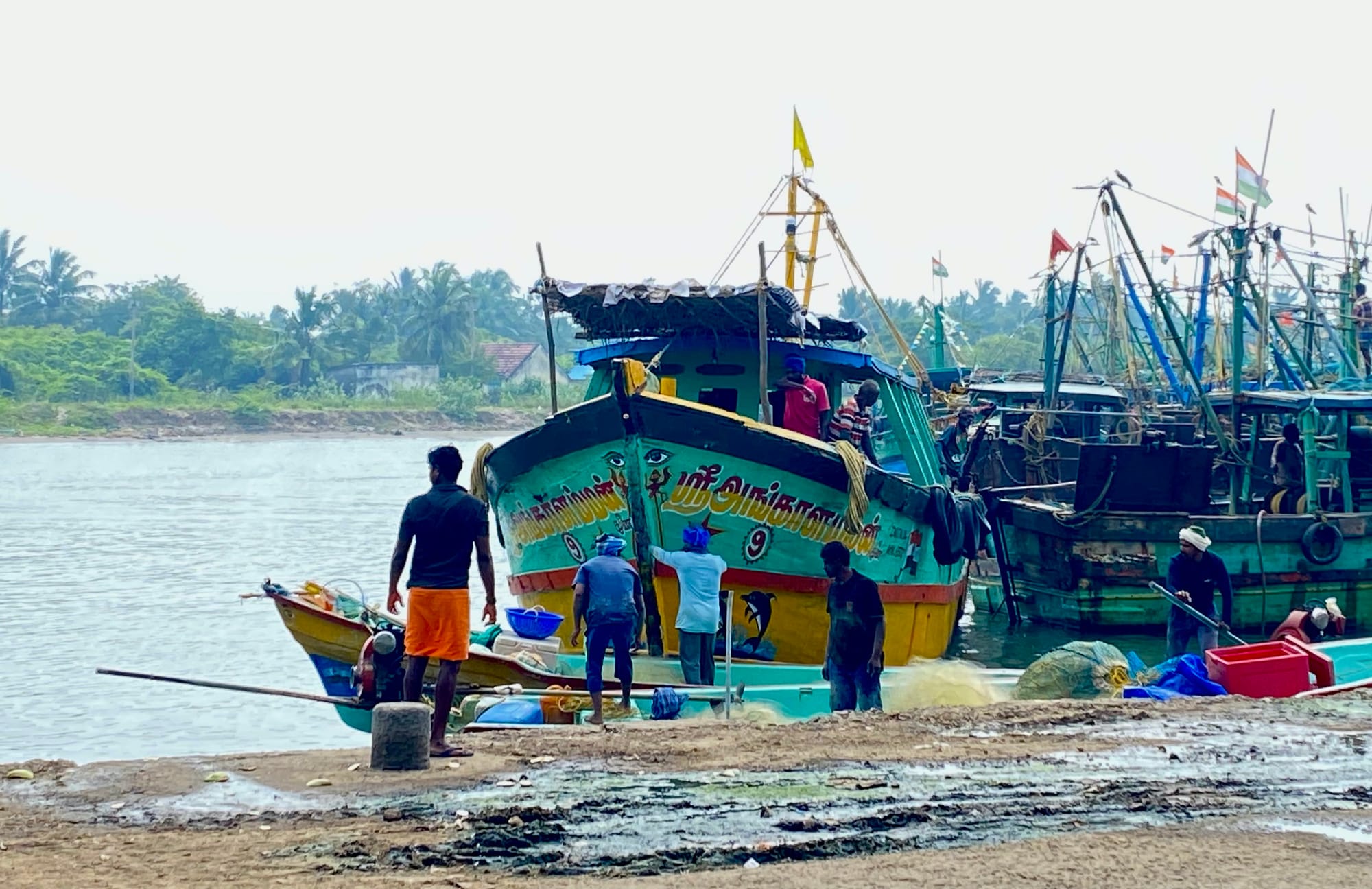
Rather, the power inequalities are shaped by the differences in governance systems between small-scale fishing and the mechanised fishing sector. The organisation of small-scale fisheries is still centred around the fishing village, with the owner and workers in a boat usually stemming from the same village. Each fishing village is governed by a village council, called the uur panchayat. In contrast to democratically elected gram panchayat which represent multiple smaller fishing and non-fishing villages, an uur panchayat only represents one fishing village. Its head and six other members are not democratically elected, but rather deliberatively selected for one year in an annual meeting of all village inhabitants. The uur panchayat focuses on local fishing regulation and conflict resolution, both within the hamlet and with fishermen from other villages, as well as temple festivals, weddings and deaths. Many fishermen have little faith in the uur panchayats, stating: “The village head says he is the head, but only collects the money for the temple festival and when we ask him for help, he never listens.”
Each village also has a Fishing Cooperative Society, headed by one male and female delegate. All fishermen and women from the Pattanavar caste above the age of 18 can become members, regardless of whether they are working in small-scale or trawler fishing. They implement a savings scheme, in which members save a small amount for nine months of the year, which will be matched by a contribution from the Fisheries Department. Furthermore, the cooperative societies act as point of contact for the Fisheries Department for all announcements and subsidy schemes.
The cooperative society delegates from the villages in Cuddalore taluk (northern subsection of the district) regularly come together in the head village Devanampattinam, whose delegate heads this union of cooperative societies. Together, this body makes decisions that concern all villages and solves problems between villages. However, it is difficult to ascertain the exact responsibilities and whether it is functional at the moment.
As it is, small-scale fishermen are only represented through their individual villages’ uur panchayats and the fisheries cooperative societies. However, these bodies are focused on the entire village – regardless of the type of boat its members use, and include owners and workers of trawler boats, too.
The mechanised trawling sector and export-oriented fish trading companies are concentrated around the harbour. For trawler boats, this is the only place they can land and park their boats and, for export companies, it is the place where large quantities of fish are concentrated in one location, feeding the hunger of this sector. Trawlers and export traders are organised in associations that only represent their interests, regardless of village affiliation. There were three associations active in Cuddalore Fishing Harbour: a multi-day trawler association, a single-day trawler association and a trader association. They were formed after the 2004 Indian Ocean tsunami and governed the harbour according to their interest.
The Tamil Nadu Marine Fisheries Regulation of 2016 requires fishing harbours to be governed by a harbour management committee made up of delegates from the fisheries department and the associations of trawlers, traders, female fish vendors, harbour labourers, and small-scale fishermen to guarantee the safeguarding of every group’s interests. In Cuddalore Fishing Harbour, this committee existed only as a paper tiger and broke up after the ring-seine ban due to animosities over the ban. Instead, the harbour is now shaped by the interests of trawler fishermen and traders. Although their associations have become less active in recent years, they still provide a powerful body for their members, to shape the harbour in their interest.
Small-scale fishermen and female fish vendors lack this kind of collective organisation around their interests, which weakens their position in struggles with other fishing groups and their bargaining power vis-à-vis the Fisheries Department. The disbandment of the harbour management council has left villages without any representation in the harbour, making small-scale fishermen further disillusioned about collective organisation. At an interpersonal level, the social cohesion and solidarity between fishermen, neighbours and fellow villagers also seems to have suffered. “We used to help each other, but now everybody is on their own.”
New harbour as a clean slate
Another prospective window of opportunity to change this power imbalance regarding spatial inequities was provided by the redevelopment of the fishing harbour, which began in 2020. Officially called renovation of “the existing fishing harbour at Cuddalore” (Tamil Nadu Pollution Control Board, 2023), the project actually involved the development of a new fishing harbour on peninsula at Mudhu Nagar in the Gadillam river, north of the existing harbour. The peninsula, which had previously been used by the District Fisheries Department as its headquarters, was developed with a new access road, two auction halls and four net-mending halls, as well as sanitary facilities.

With 800 metres of concrete piers along three sides of the peninsula and a further 819 metres of pier on the riverbanks north and south of the peninsula as well as on the opposite side of the Gadillam river in the village of Sonankuppam, the new fishing harbour has the potential to contribute to a more equitable distribution of space between mechanised trawlers and small-scale fishers, between export-oriented trading companies and female fish vendors. However, many rules on how the harbour is going to be used remain unclear. For instance, fisherwomen reported that they would not be allowed to operate their fish market in the new harbour, and it was unclear whether fibre boats would actually receive a dedicated space. The planning process did not include fisherwomen, fishermen and traders and their demands for facilities like additional storage space for nets and buildings that could be rented out by trading companies, fishermen and female fishmongers alike, remained unheard.
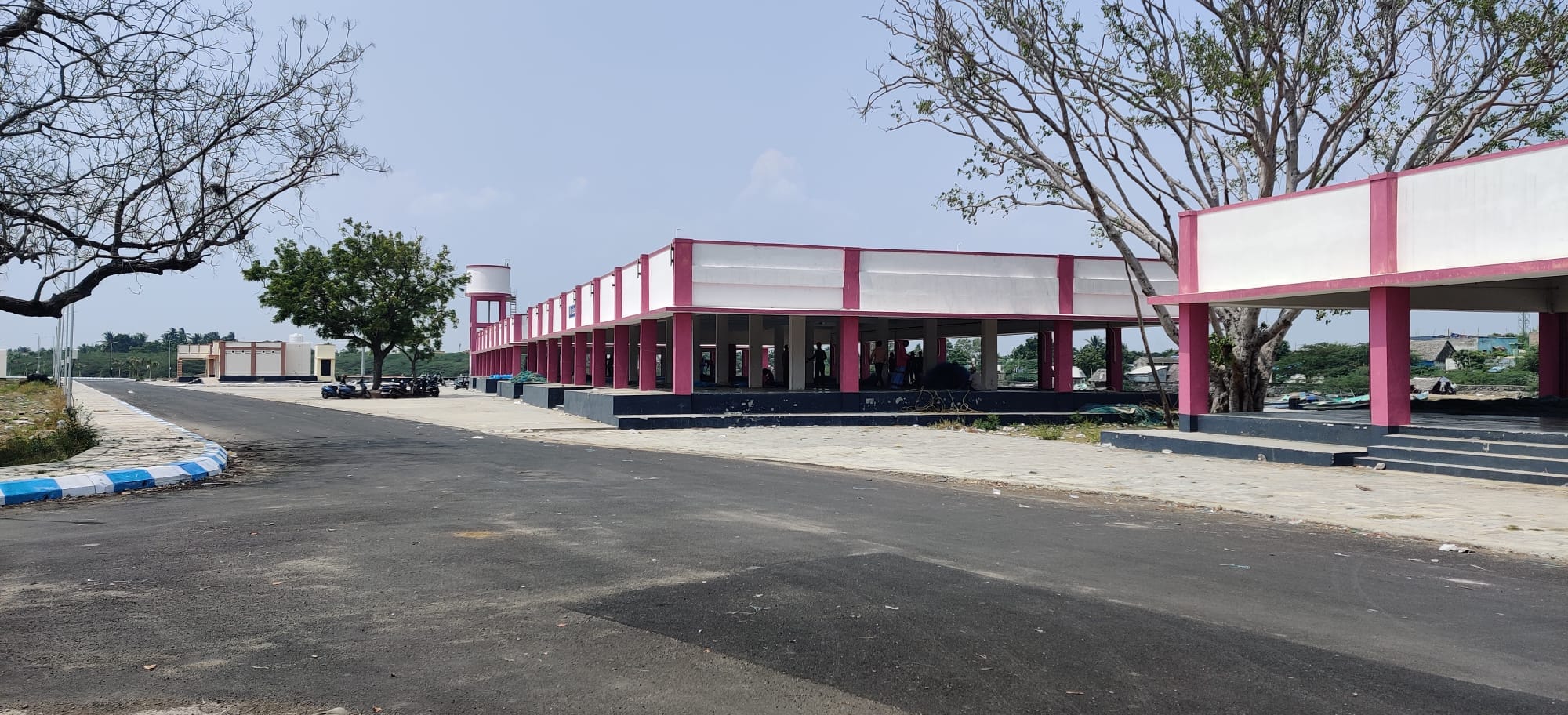
The INR 100 crore (approximately USD 11.97 million) project, 90% of which were financed by a loan from the National Bank of Agriculture and Rural Development, was completed in 2023. The harbour was inaugurated by Tamil Nadu Chief Minister M.K. Stalin via videoconference in May 2023 but was not in full use by June 2024.
The sand in the harbour basins to the north and south of the harbour peninsula is constantly replenished from the adjacent river, making them very shallow. This makes it very difficult for steel-body trawlers to enter. The same is true for the main river. Necessary dredging works were not included in the budget for the harbour, according to sources within the Fisheries Department.
Furthermore, the bridge that crosses the river at the existing fishing harbour is too low for trawlers with higher masts to pass underneath on their way from the sea to the new harbour. As a result, no one is permitted to fully relocate their operations to the new site. At the moment, it is only used for net-mending and parking of smaller boats. “We asked them to turn on the lights when we were repairing our nets there in the evening, but the Fisheries Department told us we would have to pay the electricity bill for it,” said a small-scale fisherman. This delay has a significant impact on small-scale fishermen and female fish vendors, who are forced to endure the lack of space and poor conditions in the old fishing harbour on a daily basis. It is not foreseeable whether this unfair situation would change after the move to the new harbour.
Conclusion
Fishing in Cuddalore has evolved and changed over the past few decades. It began with increased motorisation and mechanisation of operations, followed by a period of rapid growth fueled by ring-seining operations, which employed a large number of people and distributed the monetary gains from fishing intensification more equitably than trawling. The impact of the de facto ban on ring-seining in 2018/19 has been massive for former users, many of whom are in debt and have few options other than returning to small-scale, low-yield fishing or migrating to Gulf countries.
The changed fishing situation has also resulted in a shift in the power balance in Cuddalore Fishing Harbour, where trawler owners and exported-oriented traders are organised around their interests and are able to change the distribution of space in the harbour, while small-scale fishermen and female fish vendors are split by their village affiliation and have, until now, not organised under one banner.
Top-down solutions to these problems implemented by government actors have been unsuccessful. A harbour management committee was set up, but it was ultimately powerless. A subsidy scheme for deep-sea fishing was presented as a substitute for ring-seining, but it was clear from the outset that it was unattainable for most former ring-seiners. The new fishing harbour is still unusable and does not meet the needs of the various user groups.
At least part of the solution to their multiple problems must come from within the small-scale fishing community of Cuddalore. This will require collective organisation around their interests as small-scale fishermen and overcoming and reconciling old animosities. Furthermore, all the different groups of fishermen and fishing-adjacent groups should be included in state-driven decision-making processes, not only on fishing infrastructure but also in deciding on new regulations.
Jan Mogens Borchert is a research master’s student in International Development Studies at the University of Amsterdam and holds a B.Sc. in Political Science from the Technical University of Munich. He is interested in the livelihood and wellbeing of rural and urban marginalized communities with a focus on South Asia and East Africa.
Sibinthar A was an indispensable part of this project, in which he served as a research assistant and interpreter. He holds an M.Sc. in Oceanology and Coastal Area Studies from Alagappa University, and is working as a project associate at MS Swaminathan Research Foundation
Recommended Readings
- Jeff Joseph (2023) “Purse-seiners, trawlers, and the epic fight over fishing in Tamil Nadu” (https://www.himalmag.com/politics/purse-seine-tamil-nadu-trawlers-fishing-ban-protest-nagapattinam)
- Bhagath Singh (2022) “Rings of Fire” (https://www.icsf.net/wp-content/uploads/2022/04/Sam_87_art10_INDIA_Bhagath_Singh.pdf)
- Maarten Bavinck (2024) “Forum-shopping and shopping forums in Indian purse seine fisheries – an analysis of the upper ranges of a sociolegal law process” (https://www.tandfonline.com/doi/full/10.1080/27706869.2024.2341354)
- Maarten Bavinck (2020) “Implications of legal pluralism for socio-technical transition studies – scrutinizing the ascendancy of the ring seine fishery in India” (https://www.tandfonline.com/doi/full/10.1080/07329113.2020.1796297)
